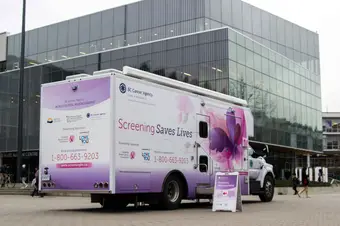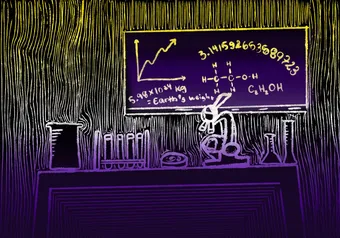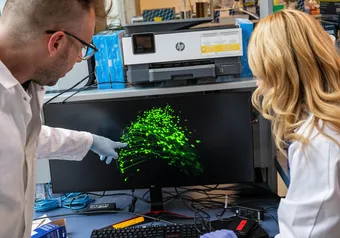There’s a mobile mammography bus in front of the Nest today. If you’re a student, you probably shouldn’t get one.
Mammograms are x-rays taken of breasts used to screen for breast cancer. The Mobile Mammography Service — operated by the BC Cancer Agency — travels around BC, serving mostly rural and First Nations communities, and provide quick and easy mammography appointments. The service is only for "women over 40," so if you’re a UBC student, you likely shouldn’t get a mammography (sorry to all the mature students at UBC — The Ubyssey still loves you).
But if mammograms help catch breast cancer (which they do), why shouldn’t you get one? It boils down to two words: false positives.
[Sorry, video not found. You can contact webmaster@ubyssey.ca to fix the issue]
No medical test is perfect. There are four categories that any test result, including mammographies, fall into.
- True Positives: You have breast cancer and the mammography says you have breast cancer.
- True Negative: You don’t have breast cancer and the mammography says you don’t have breast cancer.
- False Positives: You don’t have breast cancer, but the mammography says you have breast cancer.
- False Negative: You have breast cancer, but the mammography says you don’t have breast cancer.
False positives are dangerous because it means a patient who doesn’t have breast cancer will get treated for breast cancer.
[Sorry, video not found. You can contact webmaster@ubyssey.ca to fix the issue]
Think about it like this — take 1,000 people with breasts aged 50 to 59 and screen them for breast cancer (with a mammogram), and you will prevent eight deaths. Screen 1,000 aged 60 to 69 and you will prevent 21 deaths. That’s a good thing — mammograms save lives.
But now take 1,000 people with breasts aged 40 to 49 and you will likely prevent eight deaths, but you will also get 121 false positives, conduct 10 unnecessary biopsies and one false negative. The negative emotional, monetary and physical consequences of treating those who don’t have breast cancer outweigh the benefit of doing these regular diagrams.
It doesn’t make sense to get a mammogram every two years if you are under the age of 50 — the dangers outweigh the risks. That’s why the Canadian Cancer Society recommends that if you are aged 50 to 69 you should get a mammogram every two years. If you’re 40 to 49, they recommend you talk to your doctor.
These numbers are for people who are at a normal risk level for breast cancer. If you are at higher risk for breast cancer, talk to your doctor about what to do.
So if you're at UBC, have breasts and are under the age of 50, walk right past the giant pink trunk (but do a monthly). But if you're over 50, go in — it might just save your life.
Correction: This article has been updated to remove unnecessarily gendered language.
First online
Share this article








